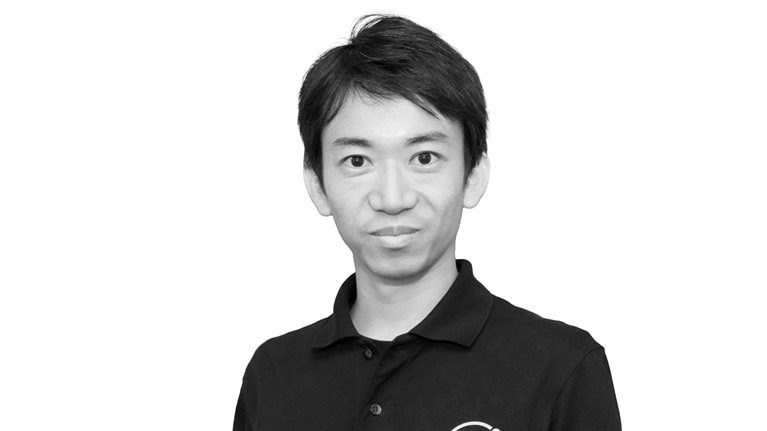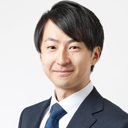As part of our work, we have the privilege to speak with many inspiring innovators. Although the business community usually focuses on companies, pitches, and valuations—and less on the innovator—we thought it would be interesting to learn a bit more about the people behind healthcare innovation. In this series, we are sharing some of our conversations with innovators in a condensed format to gain insights into their experience, opinions, and learnings.
The latest conversation is with Kazuma Abe, CEO and Founder of MEDRiNG, which focuses on developing smart clinics and digital healthcare in Asia. His background spans both the public and private sectors, with experience in the government of Japan, as well as a healthcare startup. He describes his mission as to “eliminate uneven distribution of medical care and save lives that could be saved by care that does not depend on public funds.” Following a stint in the healthcare related-division of Government of Japan, Kazuma launched MEDRiNG, a healthcare innovator that operates and franchises smart clinics and provides electronic medical record (EMR) services in Vietnam.
This interview was conducted by Maiko Hirai, Geneva-based associate partner in the Life Sciences Practice, and Haruki Saito, a Hanoi-based consultant at McKinsey & Company.
McKinsey: What is your story, and how did you become an innovator in healthcare?
Kazuma: My interest in healthcare was sparked by an early childhood experience. When I was four years old, my father died of a myocardial infarction. Even after his death, I was able to lead a comfortable life thanks to Japan’s highly supportive healthcare system and survivor’s pension. One day, as I looked at my current situation, I wondered whether the Japanese healthcare system that had supported me would be sustainable. Currently, Japan is economically well-off, so the government is able to fully support medical care. However, I felt that, due to demographic challenges such as Japan’s declining birthrate and aging population, the healthcare system would eventually reach its limit and Japan would no longer be a country where people could enjoy healthcare at such low cost.
Feeling threatened by this and wanting to become a person who could change the healthcare system itself more sustainable, I joined the Ministry of Economy, Trade and Industry (Government of Japan) after graduating from university. I worked in the section that aims to reform the healthcare industry. After a while, I left the Ministry and chose to contribute to “the provision of affordable healthcare that does not depend on public funds” within the private sector. I started by trying to build a smart-clinic business, so that people in Japan could receive a minimum level of medical care without relying on public funds. However, I closed the business in Japan for a couple of reasons: strict regulation and control in relation to medical devices and services (for example, medical AI) and pricing challenges.
So, I turned my attention overseas to places where the public healthcare system is not yet mature and more affordable healthcare is needed. In 2019, I launched MEDRiNG, a smart-clinic business that aims to provide affordable, quality-assured medical care in emerging countries. The reason I chose Vietnam to start with is because, while the country is developing (with the fifth-highest GDP growth rate in the world in 2020), it has limited medical resources. The quality of medical facilities varies greatly, and distribution is patchy around the country with patients concentrated in large hospitals.
McKinsey: Where do you see the digital transformation of hospitals in Southeast Asia moving to over the next ten years?
Kazuma: When we talk about digital transformation in healthcare, I think there are three major areas: telemedicine, AI diagnosis, and the digitization of medical data.
I think that telemedicine has a huge potential. Currently, in Vietnam, telemedicine is mainly being applied to some follow-up of noncommunicable diseases (NCDs), and it will take time before it can be applied to other areas. That said, it is likely that more and more innovations will arise to compensate for telemedicine’s current weaknesses: for instance, nurses visiting homes with testing machines to supplement physician telemedicine consultation—in fact, this is what we are doing.
As for AI diagnosis, high-performance AI diagnostic devices with performance verified by academia are being developed. That said, these products are usually expensive; today, prices are not suitable for widespread deployment in the Southeast Asian market. Cost reduction of the devices are the key to tackle this market.
Regarding digitization of medical data, there is currently a great deal of momentum in Vietnam. Today, the penetration rate of electronic medical records in Vietnam is extremely low (approximately 2 percent as of 2022). In hospitals, patient data are managed on paper, and the environment is still not conducive to the utilization of medical data. However, the Vietnamese government has stated that it aims to achieve 100 percent EMR penetration by 2030, and it is making a national effort to digitize medical data. Already, EMR standards have been established in accordance with those in the US, and support programs for hospitals have been set up to encourage the spread of electronic medical records—in fact, a major state-owned electronics manufacturer is promoting the introduction of EMR in large state-run hospitals.
In the past year or two, startups such as MEDRiNG have been introducing SaaS-type EMR services to clinics. Importantly, perhaps because of the government’s statement, experience so far shows that Vietnamese doctors are not so resistant to EMR. The uptake of EMR is 10–20 times faster than in Japan, and I anticipate that, in the next ten years, EMR for medical data will spread at a faster pace than in Japan.
McKinsey: Looking more broadly, what are the biggest opportunities and obstacles you see for innovation in the healthcare environment?
Kazuma: The biggest opportunity for innovation is the potential for “innovation leapfrogging” on account of Vietnam’s specific healthcare environment. Compared to Japan, in Vietnam we believe that the environment is conducive to innovation using medical data because:
- The government is promoting digitization of medical data on a national level
- The regulatory environment is comparatively open to the use of patient data
Eventually, I believe there is a possibility of reimporting the lessons learned, and the products and services developed in Vietnam, back to Japan.
The increase in the number of NCDs due to aging and change to a western lifestyle is another area that is creating the need for affordable healthcare. Vietnam is beginning to experience a declining birthrate and aging population, and it is likely to follow a similar path to Japan. Medical needs for infectious diseases and acute conditions have traditionally been high and remain so; meanwhile, the medical needs in relation to NCDs and cancer are expected to rise. However, it is difficult to expand medical capacity in the short term, so the means to bridge the gap between supply and demand will be to improve the efficiency of medical care—with smart clinics.
McKinsey: When you look at the health system as a whole (providers, payers, doctors, patients), who do you see driving innovation the most?
Kazuma: I say, private health care providers. In the past, the public sector has played a leading role in the health system, but recently the private sector is expanding its role in public health. In Vietnam, all medical institutions were originally public, but with the increase in demand for medical care, private institutions have started to appear. The number of private hospitals and clinics is increasing, especially in urban areas; actually, the number of private medical institutions is also gradually growing in rural areas, but capacity is not sufficient to cover both urban and rural areas.
Healthcare providers are the ones that drive innovation, especially among private companies. While medical device manufacturers and startups which specialize in each medical field and process are of course important for innovating the overall medical process, the most important players are the healthcare providers, because they could potentially innovate the entire healthcare process in collaboration with ventures and vendors. In order to provide good-quality healthcare at a reasonable price, innovation is needed throughout the entire healthcare process, not just one part of it. We will continue to innovate within the healthcare ecosystem by transforming Vietnam’s clinics into smart clinics.

Kazuma Abe | CEO, MEDRiNG
After graduating from Tokyo University, Kazuma Abe worked at Japan’s Ministry of Economy, Trade and Industry where he was involved in advancing the efficiency and digitalization of the service industry, including medical care services. After that, he worked in an IT startup, and in 2015 established a clinical research support company. In March 2019, he established MEDRiNG Company Limited and currently serves as MEDRiNG’s CEO.

